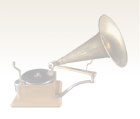 |

|
Kathleen Parlow - Teaching and Chamber MusicThe experience of having undertaken an expensive month-long tour without adequate compensation figured prominently in the Parlows' decisions from that point on. At age 40, Kathleen now reconsidered her options, turning more and more to teaching. Like Emma Albani and Éva Gauthier, Parlow found it the most reliable way of earning an income from music. Her first faculty appointment was to the music department of Mills College in Oakland, California, in 1929. Parlow found satisfaction in teaching female students in the same manner she had been trained. At the same time, she switched from solo concerts to ensemble and chamber work. Parlow organized a string quartet in which she played first violin, her first venture into this area of the string repertoire. In 1933, Mills College awarded her an honorary Master of Arts degree and by the summer of 1935, she had formed the South Mountain Parlow Quartet in Massachusetts. Thus, by the mid-1930s, she was well established in her second career. Parlow left Mills College in 1936 for an appointment at the prestigious Juilliard School of Music. However, at the outbreak of the Second World War, Kathleen and Minnie felt they could not stay in the isolationist U.S. when their homeland was at war. They therefore made the decision that finally brought this great talent back to the country of her birth. The decision to return permanently to Canada was made easier once the Royal Conservatory of Music in Toronto engaged Parlow for a series of lecture-recitals. She was by then at the same level as Auer, teaching not only students but also professional violinists. The violinist Harry Adaskin noted that the lectures were immensely successful: "Every violinist of note in Toronto was there.… I saw most of the best fiddlers in town coming in and out of her studio" (Canadian Music, page 3). Money was still a concern, however, and Parlow seemed uncharacteristically diffident. She wrote to Sir Ernest MacMillan to propose that she should teach for the Conservatory. "It seems to me I could be of use to the Conservatory and, incidentally, Canada. But I am so cowardly at taking a risk that I really do want a guarantee. Needless to remark, if my actual living is secure[,] I can do so much better work. I don't thrive on anxiety" (French, 1967).
Parlow's resulting appointment to the Royal Conservatory in 1941 brought with it temporary financial security. Soon, too, Parlow found herself performing with the Toronto Symphony Orchestra, conducted by Sir Ernest MacMillan. Now as busy as ever, she taught students at her new home in Toronto, to which the Parlows moved in March 1941.
It is perhaps for Parlow's pioneering ventures in chamber music that she is best remembered in Canada. Soon after moving to Toronto she formed The Canadian Trio, with cellist Zara Nelsova, and Sir Ernest MacMillan at the piano, both from the Toronto Symphony Orchestra. Considering the high calibre of musicianship, the Trio's glowing reviews were hardly surprising. The Toronto Evening Telegram said that the Trio had something to say that Canada was yearning to hear and the Globe and Mail called the Trio a chamber organization of high distinction.
|
||||||||||||||||||||